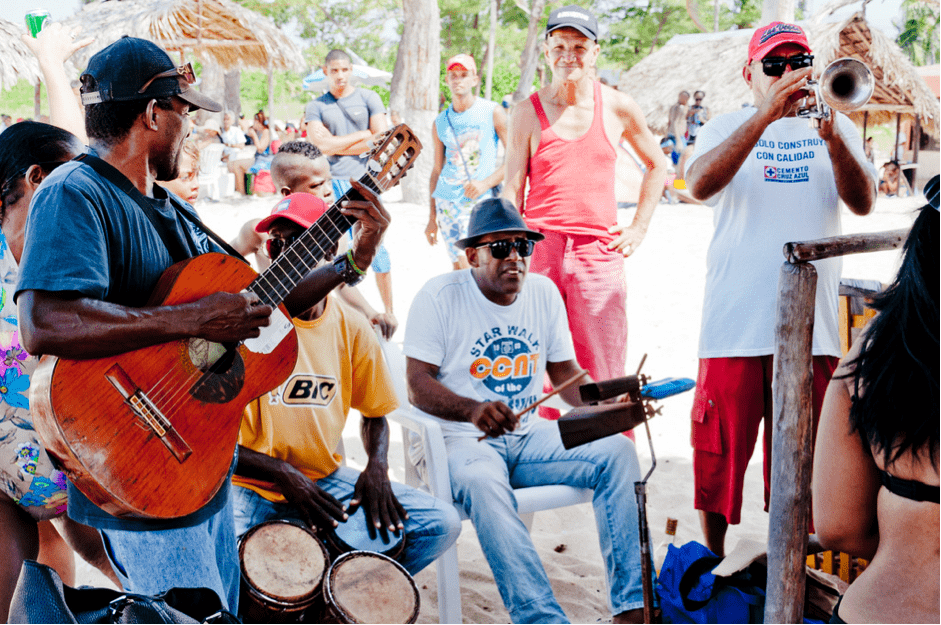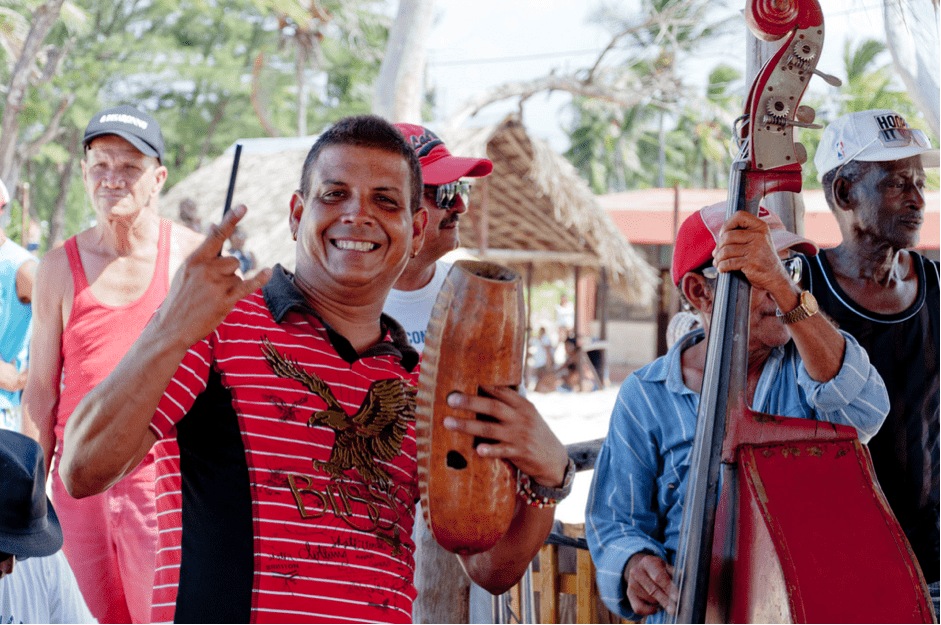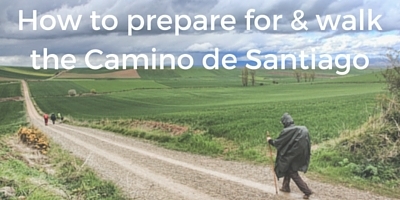I love myself a good dance story! Thanks to author Donna Anglesea who is a travelling writer with a particular interest in arts and cultural tourism, as well as a passion for finding the best local live music, wherever she goes.
Trips to Cuba are often sold as all-inclusive beach resorts in which visitors experience very little of the island’s fascinating culture, cuisine or music. While the natural heritage here is undeniably spectacular, Cuban culture is just as rich, authentic and full of color as the island’s verdant landscapes and tropical shores.
Cuban music: origins
Cuban music is one of the most popular types of music today, inviting visitors from all over the world to embark on holidays to Cuba and take a more cultural vacation. Stemming from its strong rhythmic style and passionate performances, it’s heard from the streets of Havana to the international stage. A unique mix of sounds deriving inspiration from a range of West African and Spanish influences, it has in turn influenced many other types of music as well. Cuban music has contributed to the growth and development of salsa, jazz, Afro-beat, tango, nuevo Flamenco and even Ghananian High-Life.
The core of Cuban musical style lies in the cabildos, a type of social unification that existed amongst African slaves transported to the island. Cabildos were buildings which formed ethnic and entertainment centres for those of African descent. These were closely linked with Santeria, a religion that featured percussion as an intrinsic aspect of worship and was a kind of hybrid of Roman Catholicism and West African beliefs. Every Santerian deity is linked to specific emotions, vibrant colours and drum sequences. These cultural influences combined to create a distinctive and culturally specific sound, unique to the island nation.
Finding Cuba’s musical soul
The best place to begin an investigation into Cuban music as a newcomer is to venture to Havana’s historic music halls and clubs. Scattered throughout the city, places like El Gato Tuerto and Hotel Nacional de Cuba are performance venues as well as cultural institutions. El Gato Tuerto is a club with strong traditions as it was a main haunt of the writers and singers who created filin (jazz-style pop) music during the wild nights of the 1950s. These days this historic club is a prominent venue for bolero and the kind of place where first-rate performers play sets until 4am.
Salon 1930 ‘Compay Segundo’ can be found in the Hotel Nacional de Cuba and is the place to go for a taste of old-time spirit. This luxurious hall was the place to see the original Buena Vista Social Club in Havana a few years back and while the major names within the group have since passed on, the remaining members are incredible musicians who still know how to put on a fantastic show.
For a less formal sample of Cuban rhythm, tourists should keep their ears open for the distinct call and response songs and dances of the rumba. This particular type of Cuban music clearly features African rhythms and Spanish influences and can happen in the most impromptu settings. For an organized performance, head to the brightly painted alley Callejón de Hammel, where seven different rumba groups play on Sundays. A slightly less touristy venue is the Sábado de La Rumba at Centro Cultural El Gran Palenque, a good bet for some great rumba.
Music enthusiasts and casual observers alike can appreciate and indulge in the rich musical traditions in Cuba. The music is incredibly diverse and as such offers something different to everyone who visits the country. With a wide range of influences and historical reference points, this incredible country is one which still uses music to tell stories of the past and help define its identity today.







